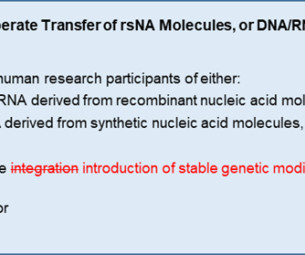The Importance of Hazard Communications in Clinical Trials Involving Genetic Engineering
Advarra
JUNE 13, 2024
Recombinant DNA technologies and genetically modified biological agents are being adapted for a wide scope of therapeutic applications, and their use is becoming increasingly common in clinical trials. How can I protect myself from exposure? What should I do if I’m exposed?













Let's personalize your content